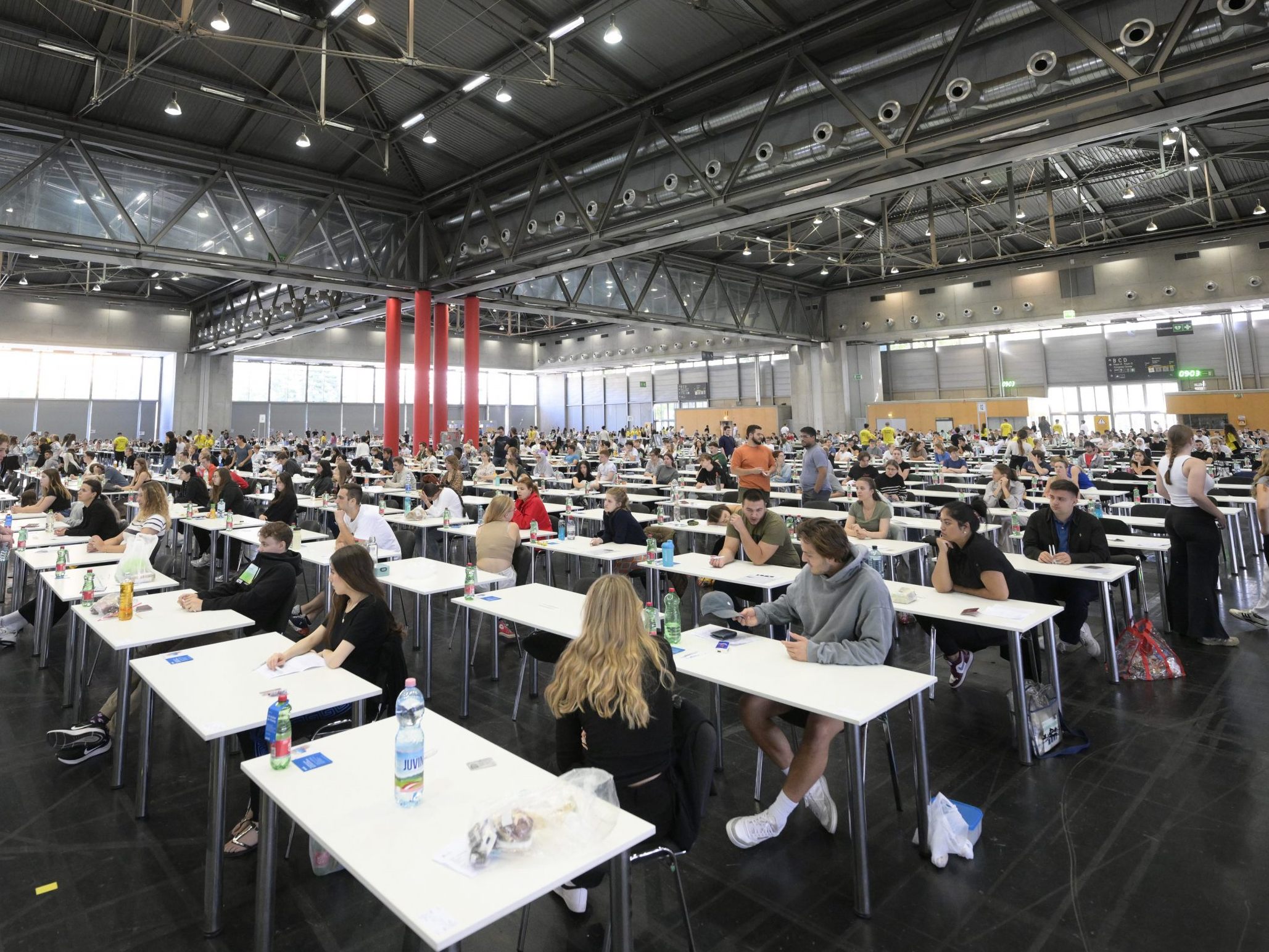Medical Admission Test: Around 16,000 Participants for 1,900 Study Places

In the medical entrance test today, 1,900 study places will be allocated at the public medical universities in Vienna, Innsbruck, and Graz, as well as at the medical faculty of the University of Linz. Up to 85 of these study places are so-called "dedicated" places for tasks in the public interest.
Medical Entrance Test: Vice-Rector for Teaching at the Medical University of Vienna Advises Against Preparation Courses
Experience shows that around 80 percent of those registered actually attend the nationwide uniform approximately eight-hour written exam, with this year's numbers expected to be available in the early afternoon. The so-called MedAT primarily tests knowledge from medically relevant subjects (especially biology, chemistry, physics, mathematics) and cognitive abilities (including memory, recognizing implications). Ten percent of the result depends on the text comprehension section, as well as the section on recognizing emotions and social decision-making. At least 95 percent of the study places in human medicine are reserved for EU citizens and 75 percent for applicants with an Austrian high school diploma. However, there is no such quota for dentistry.
On Friday, it was advised against attending sometimes expensive preparation courses for the test. "The data shows that preparation is everything, but a preparation course is not," emphasized Vice-Rector Rieder at a press event shortly before the start of the test at the Messe Wien. The university itself offers many preparation materials, there are offers from the federal states, and the Austrian National Union of Students (ÖH) is also very active in this area. In surveys, around 30 percent indicated that they had attended a preparation course. However, their chances of success were not higher because of this. The national ÖH sees it differently: Those who can afford expensive preparation courses, private tutoring, or months of study time have a clear advantage, criticized Chairwoman Selina Wienerroither (Association of Socialist Students) in a statement. Therefore, "an expansion of existing capacities is needed to ensure socially equitable access."
More Registrations for Medical Entrance Test in Vienna and Linz
By far the most applicants for a medical degree at a public university have registered in Vienna again this year, namely 7,729. This is 330 more than the previous year. This time, there are about ten applications for each of the 772 study places. For more than half of the applicants, medicine is the absolute dream study, said Rieder in an interview with the APA. "But it's not the case that all 16,000 necessarily want to become doctors," she said, looking at the nationwide numbers.
Also, more applicants than in the previous year were registered at the Medical Faculty of the University of Linz, with 2,084 people, there are now seven applicants for one of the 320 study places. In Innsbruck, 3,238 have registered for the test, with 420 places available. In Graz, there are 2,617 registrations for 388 places.
The effort for the admission procedure is significant, with 100 staff members and 400 students involved on the test day in Vienna alone. According to Rieder, about half of the applicants come from Vienna, and a quarter from Lower Austria. Another trend: the proportion of applications from the EU area - especially Germany - is decreasing, from previously 20 to now 15 percent.
Medical Admission Test: In Innsbruck, for the first time, Austrians are the majority again
A similar development is also seen at the Medical University of Innsbruck: "For the first time, more applicants from Austria than from EU countries have registered," emphasized the Vice-Rector for Teaching and Student Affairs, Wolfgang Prodinger, at a press conference before the start of the admission procedure. A total of 3,238 people have registered in Innsbruck, 321 of them for dentistry. Of the 2,917 fixed registrations for human medicine in the admission procedure, 1,513 people were from the "Austrian quota". 1,361 applications came from EU countries, primarily from Germany with 1,230 people. However, whether the Austrian applicants will actually be in the majority on site was unclear: "There is an average no-show rate of around 25 percent year after year," said Prodinger. The admission test took place again this year - as in previous years - at the Innsbruck Messe.
For the second time, up to 85 study places nationwide are "dedicated" to tasks in the public interest, with 34 at the Medical University of Vienna. Rieder reported a significantly increased interest, with 400 applications this time compared to 280 last year. Those applying for a "dedicated" study place must achieve a lower score on the test but, in return, must work for a certain period at a public institution (Austrian Health Insurance Fund, Ministry of Defense, etc.) as a general practitioner, hospital, military, or official doctor after graduation. Last year, not all dedicated places were utilized - partly because candidates did not achieve the necessary score, partly because they were "too good" and qualified for a regular study place. In these cases, the places were then filled with the next best test participants.
(APA/Red)
This article has been automatically translated, read the original article here.





